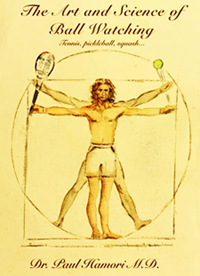The Tennis Brain:
Part 2
Paul Hamori, MD
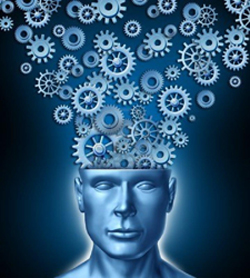
There is a revolution taking place in neuroscientific theories of sensory data processing. This newer thinking revolves about the theory of predictive processing.
Many neuroscientists are now proponents of what is known as top-down bottom up processing. Essentially this hypothesis views the brain as a prediction engine.
The brain decides what it expects to see and reconciles this with incoming sensory information. If everything matches up, processing speed is enhanced thus allowing us to move much closer to real-time processing.
Three examples that highlight how the brain generates our reality are as follows. First, slight of hand/magic tricks–when someone pulls a coin out of your ear, or a rabbit out of the hat, your brain is showing you the most likely explanation it can come up with based on the incoming sensory data.
The brain short-circuits the incoming sensory data and creates an image that most likely makes sense in the context of what was happening. Second, phantom pain. This is when people feel discomfort in of body part that is no longer present because of amputation.
This is a very real phenomenon. There can be no incoming sensory data from the absent body part and yet discomfort is felt–this is entirely generated by the brain.
Prosthetics
Third, sensory assimilation of prosthetic body parts. It has been demonstrated that people can feel sensations occurring on a dummy arm as long as they have visual access to the stimulus.
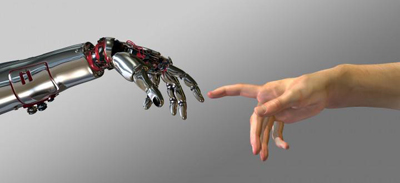
We know the dummy arm is not part of our body and yet we feel light touch upon it just as if it were our own arm. This sensation is also generated entirely by the brain.
Traditional theories predict a 50 to 200 milliseconds delay in processing incoming sensory information for hearing or vision. As Bill Bryson says in his book The Body, up to "one fifth of a second is not a trivial span of time when a rapid response is required."
To make up for this potential lag the brain generates images on partial information and probabilistic prediction. The brain shows us what it expects to see based on our cumulative life experience.
A tennis ball bouncing on the ground or contacting a string bed takes place in approximately 5 milliseconds. That is up to 40 times faster than visual processing speed based on traditional theories.
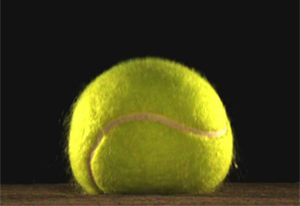
However, I do not think anyone would dispute that we can see the ball bouncing off the ground at 5 milliseconds—it's the basis for making our line calls. We can see a tennis ball bouncing off the racquet if we hold the racquet in front of our face and just tap the ball up and allow it to fall back down on the strings.
That process is a 4 millisecond process. Part of the reason we can see these things is that they are very predictable events that we have seen thousands or hundreds of thousands of times. We already know what is going to happen in these situations and our brain knows it too and can generate the image in real time.
So why might one see the ball bounce off the ground or off the racquet at close range, and not be able to see contact during strokes? In my view, this is because contact is such an explosive event.
The incoming ball is moving at 45 miles an hour or more and the racquet is moving at 45 miles or more an hour in the opposite direction. Too much is going on, directions are changing too fast, our attention is drawn elsewhere–the net, the opponent, the conditions, etc.
In 2013 Professor Mary C. Potter of MIT published an article showing volunteers could recognize complex images flashed on a computer screen for as little as 13 milliseconds. As part of her conclusion she states "a possible role for such rapid visual understanding in normal experience would be to provide nearly instantaneous conceptual activation that enables immediate action when necessary."
Attentional Windows
Attentional windows are blocks of space and time to which we pay attention. According to neuroscientist Marije van Beilen "the attentional window is under voluntary control and is set according to the expected relevance of the environmental signals for the observers momentary behavioral goals".
In other words we can decide what to pay attention to and limit the attentional window voluntarily. However studies show that when stimuli occur in close succession to each other, later stimuli also known as distractors can block out previous stimuli.
Additionally it has been shown that auditory cues help focus the attentional window. Thus, when we attempt to follow our shot out of the contact event, we lose the memory of having seen contact because we pay attention to other distractors.
There are ways to limit the attentional window and minimize the effect of distractors. These are described in my book the Art and Science of Ball Watching.

The Road
The brain, as a prediction engine, is constantly generating and adjusting our reality based on incoming data and probabilistic expectation. As an example, have you ever driven a stretch of familiar road only to realize you have no real recollection of what went on except that you did not crash your car and you stayed in your lane?
You might of been lost in thought or god forbid making a phone call. While you were thinking or talking, your brain was assessing your location in time and space, the location of other vehicles, keeping you in your lane, keeping proper distance from other vehicles by using prediction coupled with incoming sensory data–with absolutely no conscious effort.
In large part this is possible because of the many trips you have already made on this same road. Tennis ball tracking is no different. Your brain is constantly predicting ball location, trajectory, flight pattern, spin, and reconciling it with incoming visual input.
The brain has a lifetime of experience doing this. Because of top-down bottom up processing the brain can do this much faster than we previously thought. At the same time, because the brain knows the location of the ball, you do not technically have to see it at point of contact to hit the ball.
However I think we can agree it's better to watch the road as you drive, than not. Similarly I think it is better to see the contact, than not. I think it leads to cleaner hitting and greater efficiency for power and spin. Roger Federer in his prime, mesmerized us with his clean and effortless ball striking which was in part a consequence of his ball watching.
Conclusions
I would like to close with some concrete examples of professional ball watching, and non-watching and make a few comments on the merits of the various techniques. I have played tennis all my life since age 5–that's 55 years, and the majority of the time I have not seen contact nor had what I would call exemplary ball watching skill.
As stated in the introduction, pros tell us always watch the ball, but they never tell us how–it seems self-explanatory and intuitive but in fact it is counterintuitive. It would seem redundant to try and teach someone how to watch the ball–everyone can see, on the surface it seems natural. But in fact in high-level sports, a lot of what we need to do is not natural and you have to be trained properly to do it.
In the first example we see Novak Djokovic striking a forehand. As you can see from the location of the ball and the racquet head, and the eyes, Novak is not watching the contact.
And this is probably how most players play. There is nothing wrong with it. Remember, that the brain, as a prediction engine knows where the ball is based on all its incoming data and cumulative experience.
We have all hit balls completely blind–for example if the ball gets behind us as we're approaching the net, sometimes we scoop a half volley from behind completely unsighted yet we make adequate contact and sometimes hit a good shot. Completely unsighted.
There are some tactical advantages to looking out at the court. Namely, court vision and an understanding of where your opponent is, and where your shot should be going.
In our second example we see Roger Federer. I think it's safe to say that he is greatest ball watcher of all time.
This was much talked about in his early career but faded from interest over time as we got so used to seeing his genius and just assuming that that was normal. Yet, his ball watching is distinctly different than most other top players.
He uses a 4 step technique. As the ball is approaching the contact zone he turns his head to the hitting side. Then his eyes make a jump saccade back to the contact point. Next, he narrows his eyes as if squinting to limit the attentional window to the hand-racquet complex. Finally he does not follow the outgoing ball thus maintaining his attentional window upon the contact point. (For on this check out previous articles. Click Here.)
So is one or the other of these 2 techniques superior? I cannot help but feel that all things being equal, it is better to see/perceive the contact than not.
Many pros are teaching how to not follow the outgoing ball. The technique of trying to see contact and narrowing the attentional window accomplishes that goal.
In the current Rolex commercial about Roger Federer, they say that numbers alone cannot determine the greatness of a player. There are many intangibles that have made Federer the most enjoyable player to watch despite the outcome of a given match or number of grand slam titles.
Having recently attended Indian Wells, I can tell you that even marquis matches had huge numbers of empty seats. In contrast, during the Roger Federer era, the stadium was always jammed packed with people spilling out into the aisles even in Roger's early round matches. They instinctively knew they were going to see something special that would not last forever, get it while you can.
While I was at Indian Wells, I paid close attention to the upcoming crop of players. Two players in particular appeared to have at least partially adopted the Roger Federer ball watching technique, namely, Danil Medvedev and Carlos Alcaraz.
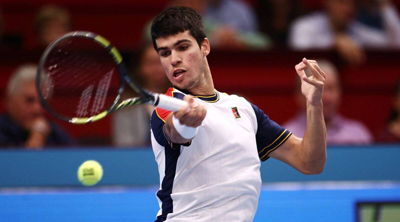
Both turn their head to the hitting side and hold it there longer than most other players. Medvedev particularly on the backhand, especially when he runs wide, and Alcaraz on the forehand. I think many experts would agree these are 2 of the most likely players to become world #1 in the near future.
My first article began with drawing a parallel between ballroom dancing and tennis. (Click Here.) Ballroom dancing is the #1 activity to reduce the risk of dementia.
In 2018 Danish researchers published an epidemiological study that found among physically fit seniors, tennis extended longevity by 9.7 years. That's 9.7 extra quality years of life–also known as health span. For comparison, swimming and jogging increased life expectancy by about 3 years. It is theorized that the complexity of tennis and its social nature account for this difference in longevity.
In conclusion, I think it's worthwhile to study the neuroscience that allows us to play our beloved sport. As with everything in life, there is more than one way to do things, and you have to find the right path for your own skill set and brain. I hope these articles lead you to appreciate how much of a gift your brain is to allow you to have such a wonderful pursuit as tennis.




